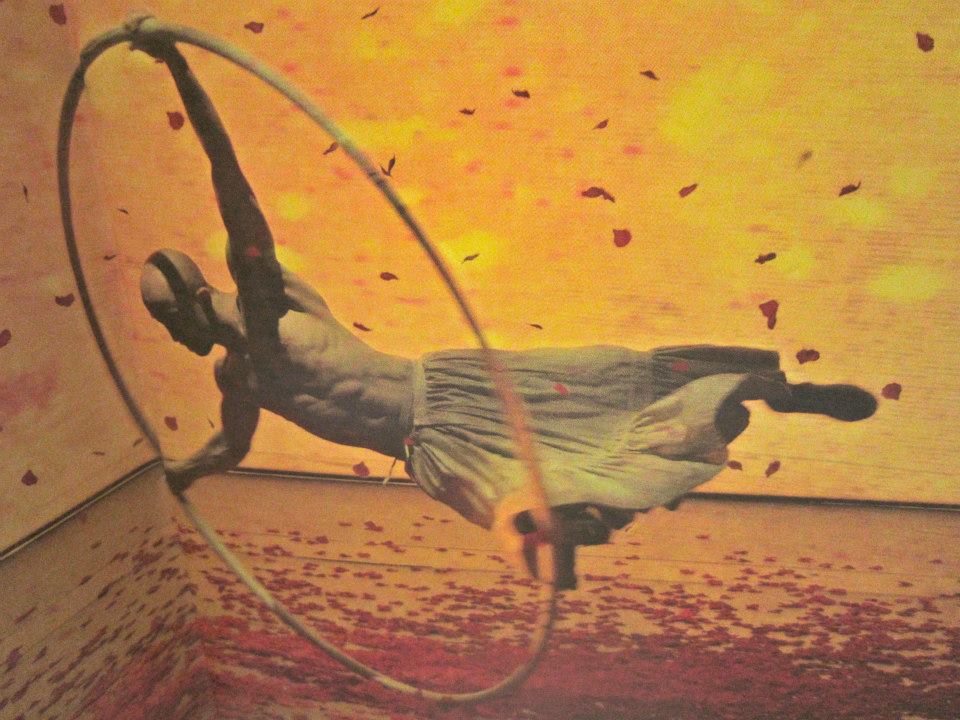DONKA: A LETTER TO CHEKHOV is penned and posted in the language of circus. Jugglers, clowns, aerialists, and acrobats are its author. In their writing of it, the director Daniele Finzi Pasca tells us in the program, they “give shape to the silences” in Chekhov’s notes, diaries, and letters.
This is not, in other words, the symbolic naturalist of the plays, the wry satirist of the farces, or the social observer of the short stories, but a personal Chekhov, expressed in a physical language that evokes dreams, folklore, and Slavic primitivism. The images in this homage have more in common with Chagall than with Ibsen, Gorky, or the other writers with whom Chekhov is generally grouped. There are chandeliers of ice that melt under the stage lights, and wounds that spout water, and diaphanous creatures that stream through the air.
Not that there aren’t references to the familiar Chekhov to be spotted, to Treplev’s decadent musings in THE SEAGULL, or to the duel in THE THREE SISTERS. The constellation of image and mood that we call “Chekhovian” is there, of autumnal sorrows and love just out of reach, of country doctors, futurist dreamers, clingers to the past, intimations of historical decay. But as much is drawn from Chekhov’s life as from his plays, including his tuberculosis and premature death upon the completion of THE CHERRY ORCHARD. At one point the stage is aflutter with what looks like the red leaves of autumn, or a scattering of rose petals, but which actually represents the blood drops of a consumptive cough, beautiful nonetheless.
To be sure, it was a third of the way into the first half that DONKA came alive for me, but when it did I was captured, like a boy at the circus. The artistry is virtuoso – the soloist in the hoop amidst the red flakes is not soon forgotten. This is a letter written by one group of artists out of love for another, and shared with the rest of us who know him.
